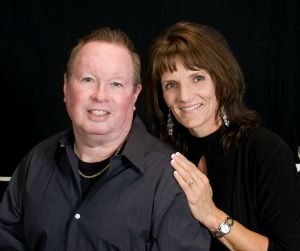By Corrine Altman
 I am not sure where this letter will find you. You may have just found out your child has a hearing loss, or you may be exploring the option of listening and spoken language communication. Wherever you may be, take heart: Your son and/or daughter will be okay.
I am not sure where this letter will find you. You may have just found out your child has a hearing loss, or you may be exploring the option of listening and spoken language communication. Wherever you may be, take heart: Your son and/or daughter will be okay.
For me, there were no words that generated such emotion and changed the course of my life more than when I heard, “Your son has a severe-to-profound hearing loss.” Then, two years later, “Your daughter has a severe-to-profound hearing loss.”
Even as I write these words 27 years later, it still stirs great emotion. You will have to make a lot of decisions and learn many things about hearing loss. At times, you may feel overwhelmed. Sometimes you will need to take a deep breath and remember you are [insert your name here] first, even before you became a parent of a child with hearing loss. Just like your child is a child first, even before he or she was diagnosed with a hearing loss.
But, before all the learning and knowledge, the first step is accepting your child has a hearing loss. This step was the hardest one for me. In fact, it took me about six months to truly accept that my son was deaf. Because we (as parents) don’t have a vote in this matter, emotions like sadness, grief, anger and denial are all very natural and real. A parent support group can be very helpful during these uncertain times. Being with other parents that understand and have similar experiences nourishes the spirit. A support group can give you honest feedback, a sense of community and validate your feelings. You can contact the national AG Bell office for information regarding a local chapter nearest you. The Listening and Spoken Language Knowledge Center also offers great resources and material for families.
I would like to share a few nuggets that I have learned the past 27 years that might be of help to you.
Nugget #1: Make a decision regarding the desired communication outcome for your child.
With today’s accessibility to information, there is a wealth of material to explore on communication choices for your child. On the other hand, you can get “information overload” that may paralyze you from making a solid decision. Expose yourself to your options, but educate yourself on your desired outcome. Try to keep it simple! I wanted my children to listen and talk so we sought information on the best way to make that happen. We pursued help and guidance that supported our choice.
Nugget #2: It’s essential to work with qualified professionals.
You need professionals that are skilled, trained and support your communication choice. When choosing professionals to work with, don’t be afraid to ask questions. These should include:
Are you currently working with families that have the same desired communication outcome as us?
Are you licensed and experienced as an audiologist, speech-language pathologist or educator to work with babies/young children?
What kind of training do you have in this communication area?
The AG Bell Academy for Listening and Spoken Language manages the Listening and Spoken Language Specialist (LSLS) certification for qualified professionals serving children with hearing loss. The certification designation, LSLS, is a standard that parents of children with hearing loss should ask about and seek. The number of certified professionals is still growing, so if you can’t find one in your area, try to find a teacher or clinician who is willing to be mentored by a LSLS – either in person or through communication technologies. Working with the right professionals can save everyone involved a lot of time, energy and frustration. When it comes to developing listen and spoken language…we don’t have any time to lose.
Nugget #3: The proper use and training of current technology is vital.
Today’s technology (when it comes to hearing aids and cochlear implants) has allowed access to sound for our children that was unthinkable 20-30 years ago. This ongoing development will bring even greater opportunities to individuals with hearing loss in the future. That being said, let’s remember that hearing aids and cochlear implants are just tools; incredible tools, but nonetheless just tools. A tool is only as good as it is applied; it’s the application of the tool that brings results. So, it’s not enough
that our children wear these tools, they also need direction and training in using them.
In closing, I am not going to lie to you and say this choice of listening and spoken language is easy, because it’s not. But it’s worth it! One of the ways that helped me keep the course was to keep my reason, or “why,” big. Your “why” needs to be bigger that any obstacle that comes your way. The John Tracy Clinic teaches that there are two students: You and your child. Be patient with yourself when you are learning. Remember, knowledge is not power; it is the application of it that brings results and change. Step-by-step action builds confidence and no one knows your child better than you. This is a family journey, and the more that everyone is on board the better the outcome. So breathe deep and before you know it, you will be writing this letter one day.
Here’s to a bright future for all our children!
Sincerely,
Corrine Altman
P.S. – I recently called my niece who just gave birth to her first child. I will always ask new parents if their baby had their hearing checked. This situation was no different. “Did he have his hearing checked,” I asked. It was her response that I wasn’t expecting: “Yes, Aunt Corrine, and he did not pass his first test. We have follow-up testing scheduled in a week. But, I’m not worried if something is wrong with his hearing…I see the quality of life that your children live and I do not see it to be a problem.”
I cried, and I was once again reminded that any challenge I face is worth overcoming and that “everything is going to be all right.”
